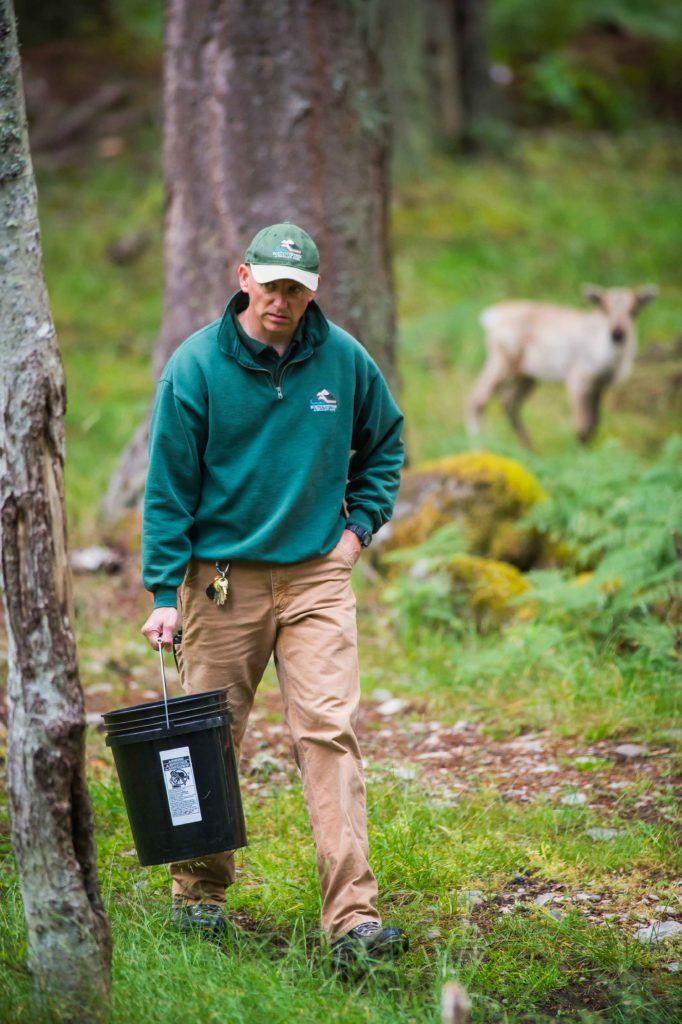The caribou at Northwest Trek know Dave Meadows’ voice.
“Ca-a-ribou!” he calls. “Ca-a-ribou!”
As around a dozen or so graceful animals canter up to him, Meadows opens a gate and lets them through.
It’s spring – so it’s time for the caribou to go back out to roam, with Meadows as their caribou-whisperer.
 A keeper for Trek’s Free-Roaming Area, Meadows deals a lot with these gregarious members of the deer family. Rotating with other keepers, he goes out mornings and afternoons to feed them, check on them and lend a hand if any need veterinary care.
A keeper for Trek’s Free-Roaming Area, Meadows deals a lot with these gregarious members of the deer family. Rotating with other keepers, he goes out mornings and afternoons to feed them, check on them and lend a hand if any need veterinary care.
And every fall, when the elk go into breeding season (rut) and grow formidable antlers, he helps bring the caribou back behind the scenes for their own safety during winter.
“The caribou are more habituated to being around keepers due to the daily care we give them when they’re behind the scenes,” says Meadows. “This helps us when we need to give specialized care to a caribou while they are in the Free-Roaming Area.”
Woodland caribou are endangered in the U.S. Only a few are seen each year south of the Canadian border. At around 4-5 feet in height, they’re much smaller than elk and moose, but bigger than the black-tailed deer that also live at Northwest Trek.
– Rosemary Ponnekanti, Northwest Trek
“Rotating them between areas means that the native plants they like to eat are always available,” Meadows explains. “So they show excitement when we move them. They have a good sense of what is going to happen, and they’ll beat me to the gate.”
By March the elk males have lost both their antlers and their testosterone-fueled fighting instinct. And so Meadows rounds up the caribou herd to go back out to graze on the new spring foliage in the Free-Roaming Area, where visitors can spot them from Discovery tram tours.
“Come on, let’s go,” he calls to them, and they gallop past him through the gate, sniffing curiously.
“There you go,” he says.